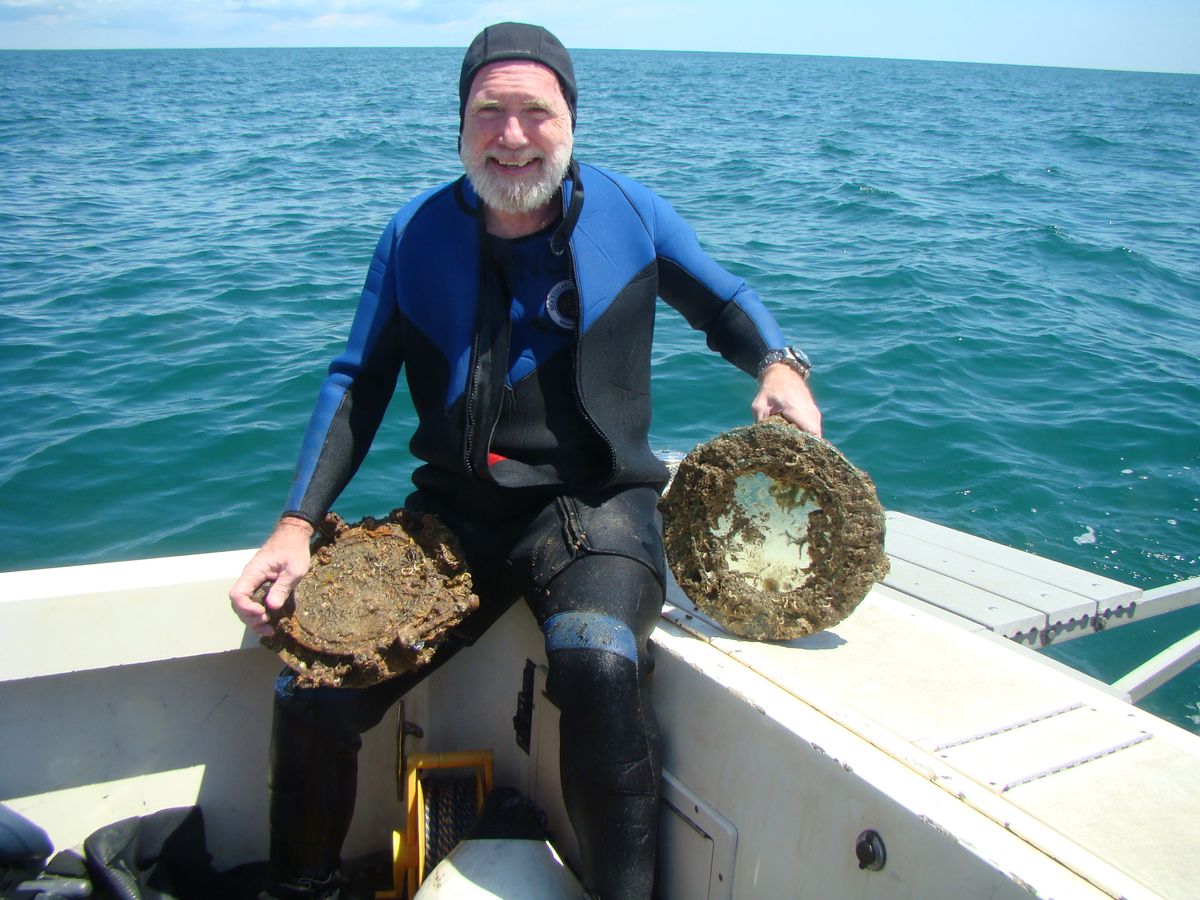Fabled 19th-Century Shipwreck May Hold Gold Treasure

The wreck of a fabled 19th-century gunrunner that may also contain a treasure in gold has been identified off the coast of South Carolina.
The SS Ozama, a 216-foot-long (66 meters) iron-hulled steamship, had a colorful history, according to Discovery News. Launched in Scotland in 1881 as the Craigallion, the ship was active in the Caribbean Seas and helped build the Panama Canal.
The ship suffered a wreck in the Bahamas in 1885 and was rechristened Ozama after a river in Santo Domingo, Dominican Republic, a frequent port of call. But in 1894, on its way to Charleston, S.C., the Ozama struck the shoals off Cape Romain, S.C. [Shipwrecks Gallery: Secrets of the Deep]
A New York Times report from 1894 describes how the wreck "stove a hole in the engine-room compartment. The water quickly filled the fire rooms, rendering the engines useless. The steamer floated off the shoals soon after striking, and at 2 a.m. sank in six and a half fathoms of water."
The captain and crew were saved, but the ship was declared a total loss.
Guns, gold and mutiny
Fast-forward to 1979, when the wreck of an unidentified ship was seen off the South Carolina coast during a magnetometer survey on other shipwrecks conducted by renowned underwater archaeologist E. Lee Spence, WBTV News 13 reports.
Sign up for the Live Science daily newsletter now
Get the world’s most fascinating discoveries delivered straight to your inbox.
"The secret is out. We've discovered the wreck of the SS Ozama," Spence wrote on his Facebook page.
But Spence said what "definitely has me excited" is the opportunity to find a bounty in gold and other treasure on the Ozama due to its checkered past in illegal smuggling operations. "Her colorful history is packed with events such as a mutiny and extensive gun and money smuggling to Haiti," Spence said, as quoted by Discovery News.
Indeed, a New York Times report from 1888 claims the ship was carrying "1,000 stands of arms, 3 Gatling guns and 500,000 cartridges to Cape Haytien [a Haitian port] … doubtless for the use of Hyppolyte's soldiers," referring to the president of Haiti.
President Florvil Hyppolyte and his supporters were at the time locked in a power struggle for control of Haiti. In poor health, Hyppolyte's supporters desperately needed arms and money to fend off political rivals, so it's likely the Ozama was carrying gold as well as arms.
Smuggled treasure
"Newspaper accounts said she was traveling in ballast, without cargo," Spence said. "Ships reporting themselves as traveling in ballast often carried money and even other cargo. When you are smuggling, the smuggled cargo often isn't listed or is intentionally mislisted."
On one trip to Haiti, the Ozama was seized by authorities, according to WBTV, sparking a diplomatic row until the captain of a U.S. warship threatened to bomb the city of Port-au-Prince unless the ship was released (it eventually was).
And Spence would own any treasure found on the wreck. "Yes I would own it," he said during an interview on Night Talker Radio Network. "This ship had a long history of smuggling and of carrying large amounts of money, and I became the owner of it last year whenever I laid claim in federal court to this wreck and other wrecks that I found off Cape Romain, South Carolina. But I had no idea when I laid claim to it what it was, and it was just recently that I discovered its identity."
He added, "I believe she may have a considerable amount of gold on it and that's what I'm hoping. And we're going to be digging into her and hopefully raising a great deal of gold."
Spence's exploration of the wreck, which will begin after mapping and ensuring the hull's integrity, may yield historical treasures beyond gold. "While reports of the ship's cargo and passengers' effects make the Ozama wreck intriguing, it is also a virtual time piece of history that has not been disturbed by careless salvage," Spence told Discovery.
Follow Marc Lallanilla on Twitter and Google+. Follow us @livescience, Facebook & Google+. Original article on LiveScience.com.












